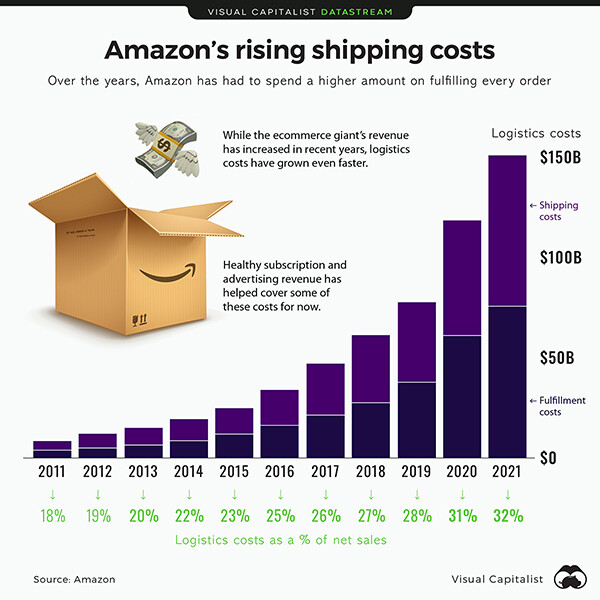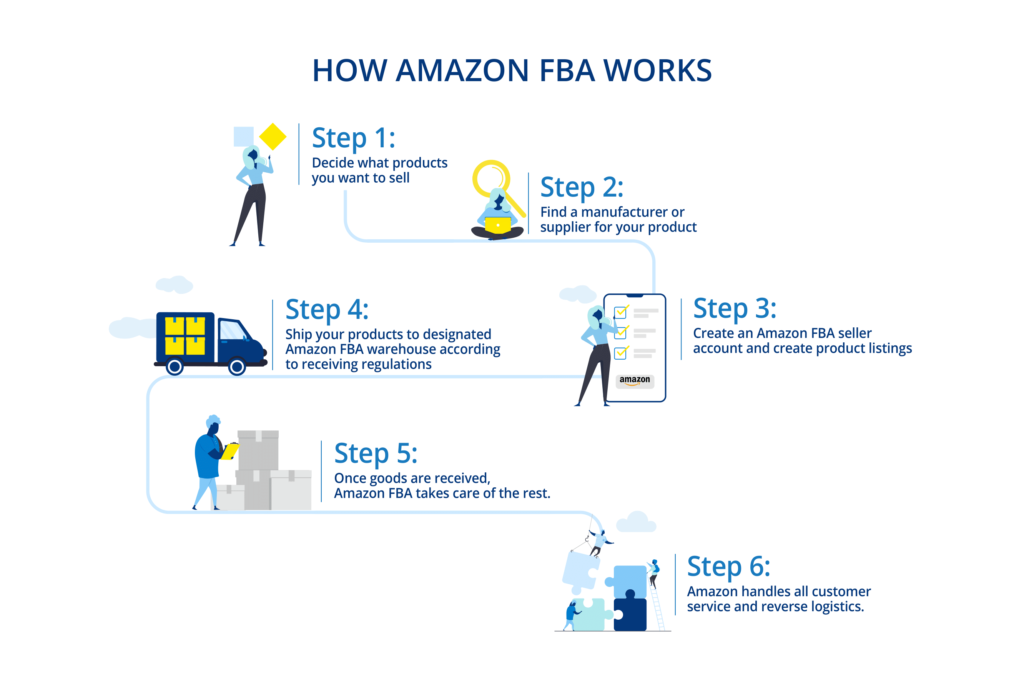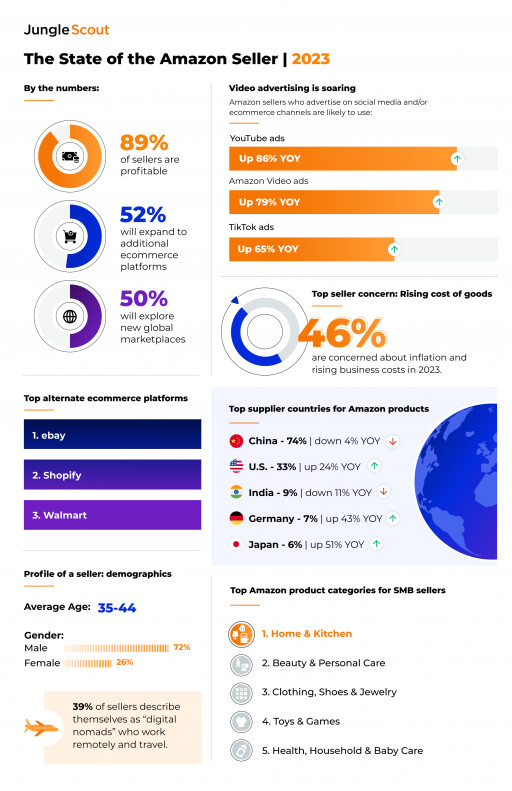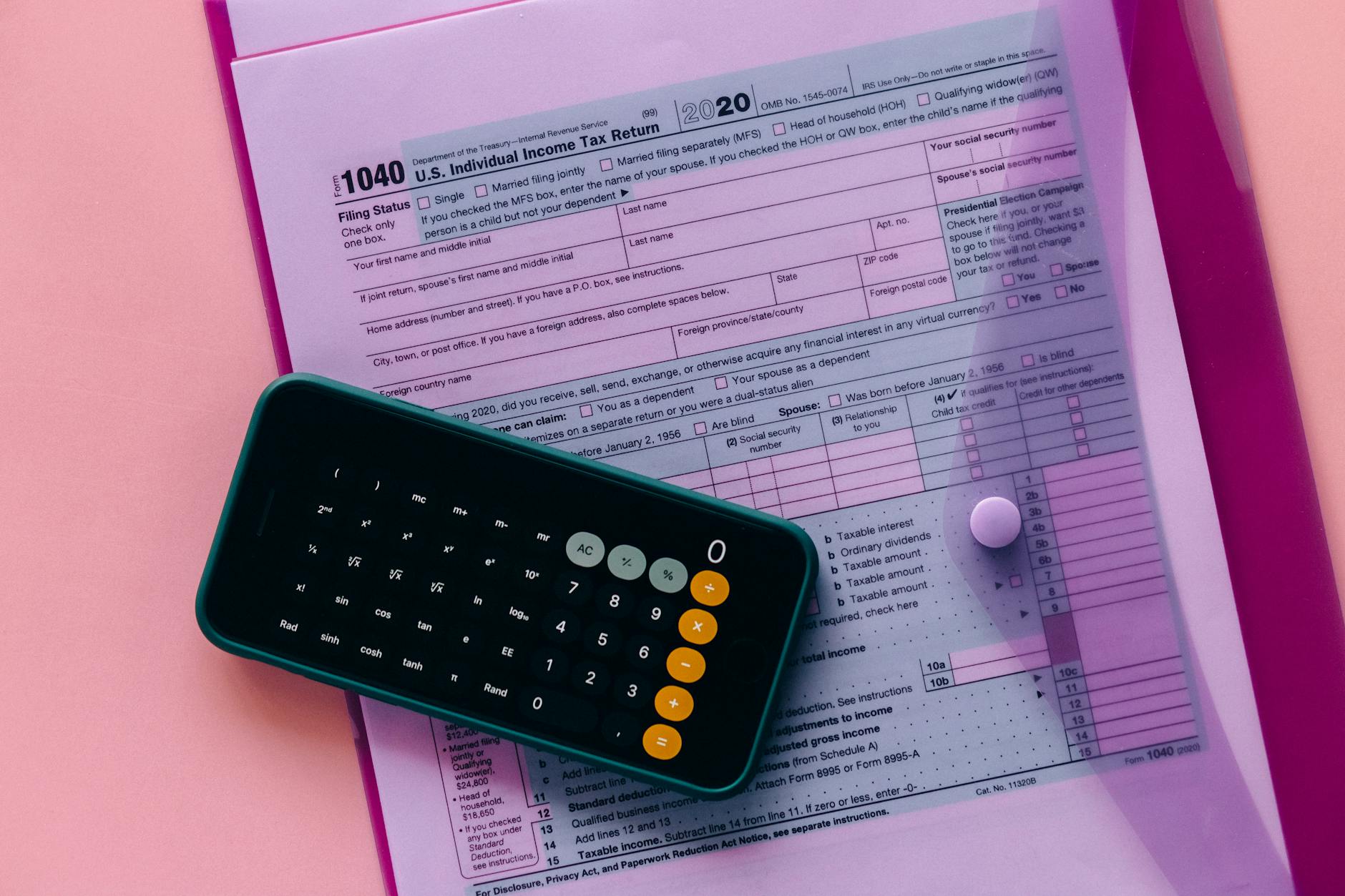Uncover the secrets of Amazon FBA Fees in 2023: What hidden costs await you as a seller? Learn more now!
Table of Contents
- Introduction to Amazon FBA
- What Are Amazon FBA Fees?
- How Do Amazon FBA Fees Work?
- The Amazon FBA Calculator: A Handy Tool
- Lowering Your Amazon FBA Fees
- Common Mistakes to Avoid with FBA Fees
- Is Amazon FBA Worth the Fees?
- Learning More: Amazon FBA Courses
- Preparing for Changes: Amazon FBA Fees in 2023
- Conclusion
- FAQs
Introduction to Amazon FBA
Have you ever wondered what “FBA” stands for when talking about Amazon? Well, FBA stands for Fulfillment by Amazon. But what does that really mean? Let’s break it down in simple terms: having an Amazon FBA business means that you send your products to Amazon’s warehouses, and they take care of storing, packing, and shipping your items to customers. It’s like having your own personal team of helpers to manage your online store!
Running an Amazon FBA business can be an exciting venture for many entrepreneurs. Instead of worrying about the nitty-gritty details of order fulfillment, sellers can focus on sourcing the best products and growing their business while Amazon handles the logistics. It’s a win-win situation that can lead to increased sales and customer satisfaction.
What Are Amazon FBA Fees?
When you are selling products on Amazon using their Fulfilled by Amazon (FBA) service, there are various fees that you need to be aware of. These fees are charges that Amazon applies for the services they provide to store, pack, and ship your items. Let’s take a closer look at what these Amazon FBA fees entail.
Understanding the Basic Fees
The main fees you will encounter with Amazon FBA are handling, packing, and shipping fees. These fees cover the cost of storing your products in Amazon’s warehouses, packaging them securely, and shipping them to your customers. It’s essential to factor these costs into your pricing strategy to ensure you are making a profit.
Additional Fees You Might Encounter
In addition to the basic fees, there are other charges you might come across while using Amazon FBA. These can include long-term storage fees for items that have been in the warehouse for an extended period, fees for returns processing, and other miscellaneous costs. Being aware of these potential additional expenses can help you better manage your overall expenses and maximize your earnings.
How Do Amazon FBA Fees Work?
When it comes to Amazon FBA fees, the size and weight of your products play a significant role in determining your costs. Larger and heavier items typically incur higher fees because they require more storage space and resources to handle, pack, and ship. It’s essential to consider these factors when pricing your products and planning your inventory.

Image courtesy of via Google Images
Seasonal Variations in Fees
While Amazon FBA fees are generally consistent throughout the year, there may be some seasonal variations in costs. For example, during peak shopping seasons like the holidays, you may experience higher fees due to increased demand and competition for warehouse space. It’s a good idea to factor in these potential fluctuations when budgeting for your FBA expenses.
The Amazon FBA Calculator: A Handy Tool
The Amazon FBA Calculator is a useful tool that helps sellers estimate the fees associated with using Fulfillment by Amazon services. To begin, you simply need to input the product ASIN or SKU, the product dimensions and weight, and the selling price. The calculator will then provide you with an estimate of the fees you can expect to pay for that specific product.
Benefits of Using the Calculator
Using the FBA Calculator offers several benefits to sellers. Firstly, it allows you to accurately determine the total cost of selling a product on Amazon, helping you set appropriate prices and plan your budget effectively. Additionally, the calculator helps you understand the impact of different variables, such as product size and weight, on your fees, enabling you to make strategic decisions to optimize your profits.
Lowering Your Amazon FBA Fees
One way to reduce your Amazon FBA fees is by optimizing the size and packaging of your products. When items are smaller and lighter, they cost less to store and ship. Consider using packaging that is both protective and efficient, so you can fit more items in each shipment, ultimately saving on storage and shipping costs.

Image courtesy of via Google Images
Considering Product Turnover Rates
Another tip to lower your FBA fees is to focus on increasing the turnover rate of your products. The faster your items sell, the less time they spend in Amazon’s warehouses, reducing storage fees. Keep an eye on inventory levels and adjust your pricing and promotions to encourage quicker sales turnover, ultimately lowering your overall FBA costs.
Common Mistakes to Avoid with FBA Fees
One common mistake that sellers make when using Amazon FBA is not considering all the potential fees involved. It’s important to remember that beyond the basic fees for handling, packing, and shipping, there are additional costs like long-term storage fees and charges for returns. By overlooking these extra expenses, sellers may end up pricing their products too low, ultimately eating into their profits.
Ignoring the Importance of Product Selection
Another error to avoid is not giving enough thought to the products being sold through Amazon FBA. Choosing the right products can significantly impact the overall cost-effectiveness of using this service. Products that are small, lightweight, and in high demand are generally more cost-effective to sell through FBA. Neglecting to consider these factors can lead to higher fees and lower profitability.
Is Amazon FBA Worth the Fees?
When considering whether Amazon FBA is worth the fees, it’s essential to weigh the costs against the benefits it provides to businesses. Let’s dive into the advantages of using Amazon FBA and how to calculate profit margins after fees to make an informed decision.
| Fee Type | Description | 2022 Rates | 2023 Rates |
|---|---|---|---|
| Fulfillment Fee | The fee for Amazon to pick, pack, and ship your products | $2.50 per unit | $3.00 per unit |
| Referral Fee | The fee paid to Amazon for each product sold on their platform | 15% of product price | 17% of product price |
| Storage Fee | The fee charged for storing your products in Amazon’s warehouses | $0.75 per cubic foot | $1.00 per cubic foot |
| Long-Term Storage Fee | The fee for storing products in Amazon’s warehouses for more than 365 days | $6.90 per cubic foot after 365 days | $7.50 per cubic foot after 365 days |

Image courtesy of via Google Images
Advantages of Using Amazon FBA
Amazon FBA offers various benefits that make it a valuable service for businesses. One major advantage is storage – sellers can store their products in Amazon’s fulfillment centers, freeing up space and time for other tasks. Additionally, Amazon’s efficient shipping services ensure quick delivery to customers, boosting satisfaction and repeat business. Moreover, FBA takes care of customer service and returns, saving sellers time and hassle.
Calculating Profit Margins After Fees
Understanding how to calculate profit margins after fees is crucial for sellers using Amazon FBA. By deducting all fees associated with the service, such as handling, packing, shipping, and storage costs, from the selling price of products, sellers can determine their actual profits. It’s important to analyze these numbers carefully to ensure that using Amazon FBA aligns with your business goals and profitability targets.
Learning More: Amazon FBA Courses
If you want to dive deeper into the world of Amazon FBA and gain a better understanding of how it all works, consider enrolling in an Amazon FBA course. These courses are designed to educate individuals on the ins and outs of selling on Amazon using the FBA program. Let’s take a look at how taking a course can help you navigate the world of Amazon FBA more effectively.
What You Can Learn in an Amazon FBA Course
Amazon FBA courses cover a wide range of topics, from setting up your seller account to optimizing product listings and mastering advertising strategies. You can expect to learn about product research, sourcing, inventory management, pricing strategies, and customer service best practices. These courses are created by experts who have experience selling on Amazon and can offer valuable insights and tips to help you succeed.
The Benefits of Taking an Amazon FBA Course
By enrolling in an Amazon FBA course, you can shorten the learning curve and avoid costly mistakes that many new sellers make. These courses provide structured learning materials, step-by-step guides, and access to a community of fellow entrepreneurs who are also navigating the world of Amazon FBA. Additionally, some courses offer mentorship and support to help you succeed in your FBA business.
Overall, taking an Amazon FBA course can give you the knowledge and tools you need to run a successful FBA business and maximize your profits on the platform. Remember, investing in education is investing in your business’s success.
Preparing for Changes: Amazon FBA Fees in 2023
As we step into 2023, Amazon FBA sellers need to be vigilant about any alterations in fees that Amazon may introduce. Keeping an eye on updates regarding Amazon FBA fees is crucial to staying ahead in the e-commerce game. By being informed, sellers can anticipate how such changes might impact their business and take proactive measures to adapt.

Image courtesy of via Google Images
Adapting Your Business to Fee Updates
When faced with new Amazon FBA fees, it’s essential for sellers to adjust their business strategies accordingly. One way to navigate fee updates is by optimizing product size and packaging to minimize costs. Additionally, sellers can consider streamlining their product turnover rates to reduce storage fees. By implementing these adjustments, businesses can position themselves to thrive despite fee changes.
Conclusion
Throughout this article, we’ve delved into the world of Amazon FBA fees and the significance they hold for anyone running an Amazon FBA business. Understanding what is Amazon FBA is crucial for success in the e-commerce realm.
From uncovering the various Amazon FBA fees that sellers encounter to discussing ways to optimize costs and maximize profitability, we’ve covered a wide array of essential information. Whether it’s learning about the basic fees such as handling, packing, and shipping, or delving into additional costs like long-term storage and returns, being aware of these expenses is paramount.
Exploring how Amazon FBA fees work, including the factors that influence these costs such as product size and weight considerations, allows sellers to make informed decisions when strategizing their business approach. The Amazon FBA calculator emerges as a valuable tool for estimating fees accurately and planning ahead.
Moreover, we’ve stressed the importance of lowering your Amazon FBA fees by optimizing product size and packaging and considering product turnover rates. By avoiding common mistakes in fee calculation and product selection, sellers can enhance their cost-effectiveness.
When contemplating whether Amazon FBA is worth the fees, weighing the advantages like storage, shipping speed, and customer service against the associated costs is key. Calculating profit margins after fees allows sellers to gauge the financial viability of their business model.
Lastly, we’ve touched upon recent changes in Amazon FBA fees in 2023 and the importance of staying updated on fee adjustments. Adapting business strategies accordingly ensures that sellers can navigate these changes effectively and continue to thrive in the competitive e-commerce landscape.
By comprehending the nuances of Amazon FBA fees and the broader implications for an Amazon FBA business, sellers can make informed decisions that drive success and growth. As you delve into the world of e-commerce, remember that knowledge is power when it comes to understanding and managing Amazon FBA fees.
FAQs
What is Amazon FBA?
Amazon FBA stands for Fulfillment by Amazon. It’s a service where sellers can store their products in Amazon’s warehouses. When a customer places an order, Amazon picks, packs, and ships the product on behalf of the seller.
How much does Amazon FBA cost?
The cost of Amazon FBA varies depending on the size and weight of the products you want to sell. Basic fees include handling, packing, and shipping costs. Additionally, there are other fees like long-term storage and returns that sellers should consider.
Can I calculate Amazon FBA fees by myself?
Yes, you can! Amazon provides a handy tool called the FBA calculator that helps sellers estimate the fees associated with using their service. By inputting details about your products, you can get an idea of the costs involved in using Amazon FBA.
